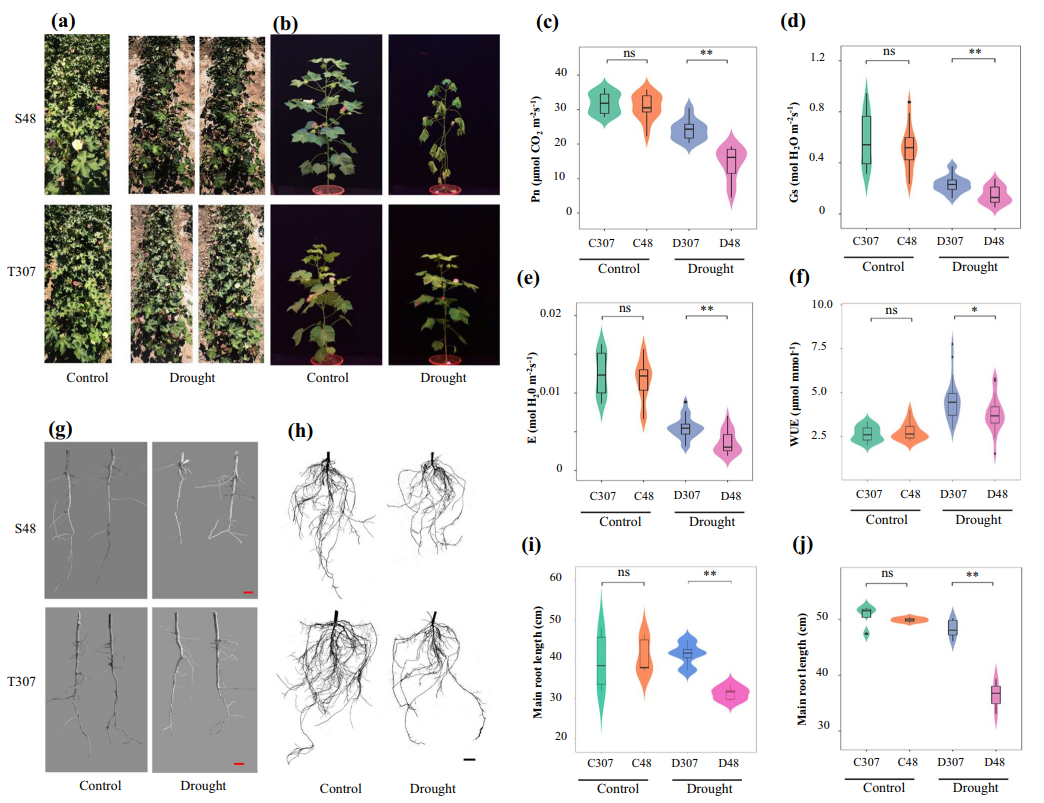Abstract
In order to understand the molecular mechanism of cotton's response to drought during the fowering and boll stage, transcriptomics and metabolomics were carried out for two introgression lines (drought-tolerant line: T307; drought-sensitive line: S48) which were screened from Gossypium hirsutum cv. ‘Emian22’ with some gene fragments imported from Gossypium barbadense acc. 3–79, under drought stress by withdrawing water at fowering and boll stage. Results showed that the basic drought response in cotton included a series of broad-spectrum responses, such as amino acid synthesis, hormone (abscisic acid, ABA) signal transduction, and mitogen-activated protein kinases signal transduction pathway, which activated in both drought-tolerant and drought-sensitive lines. However, the diference of their imported fragments and diminished sequences triggers endoplasmic reticulum (ER) protein processing, photosynthetic-related pathways (in leaves), and membrane solute transport (in roots) in drought-tolerant line T307, while these are missed or not activated in drought-sensitive line S48, refecting the diferent drought tolerance of the two genotypes. Virus-induced gene silencing assay of drought-tolerant diferentially expressed heat shock protein (HSP) genes (mainly in leaf) and ATP-binding cassette (ABC) transporter genes (mainly in roots) indicated that those genes play important role in cotton drought tolerant. Combined analysis of transcriptomics and metabolomics highlighted the important roles of ER-stress-related HSP genes and root-specifc ABC transporter genes in plants drought tolerance. These results provide new insights into the molecular mechanisms underlying the drought stress adaptation in cotton.

full text https://link.springer.com/article/10.1007/s00122-022-04174-0